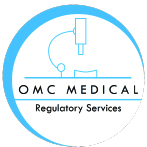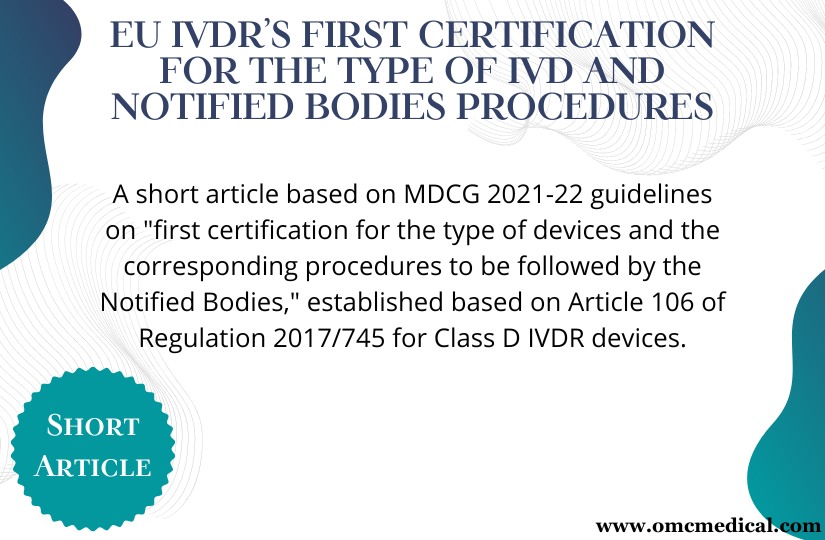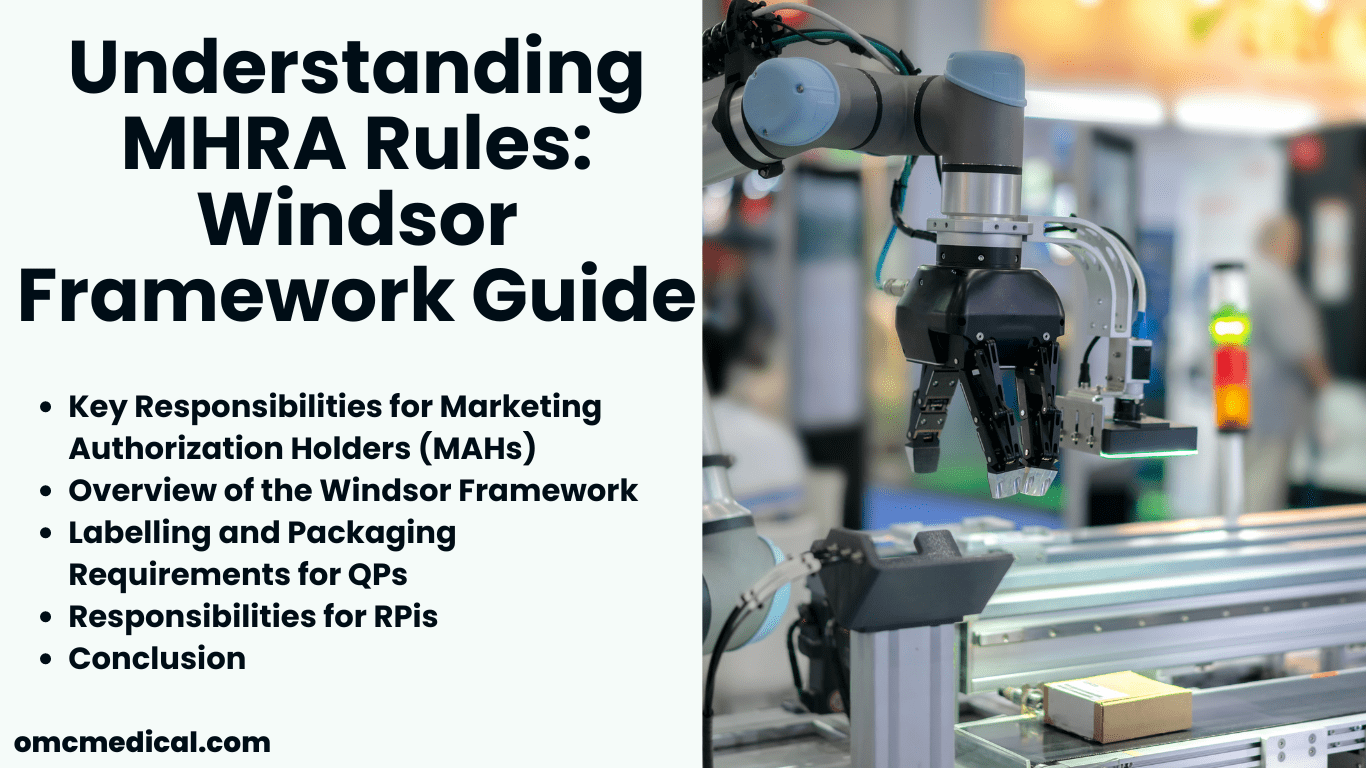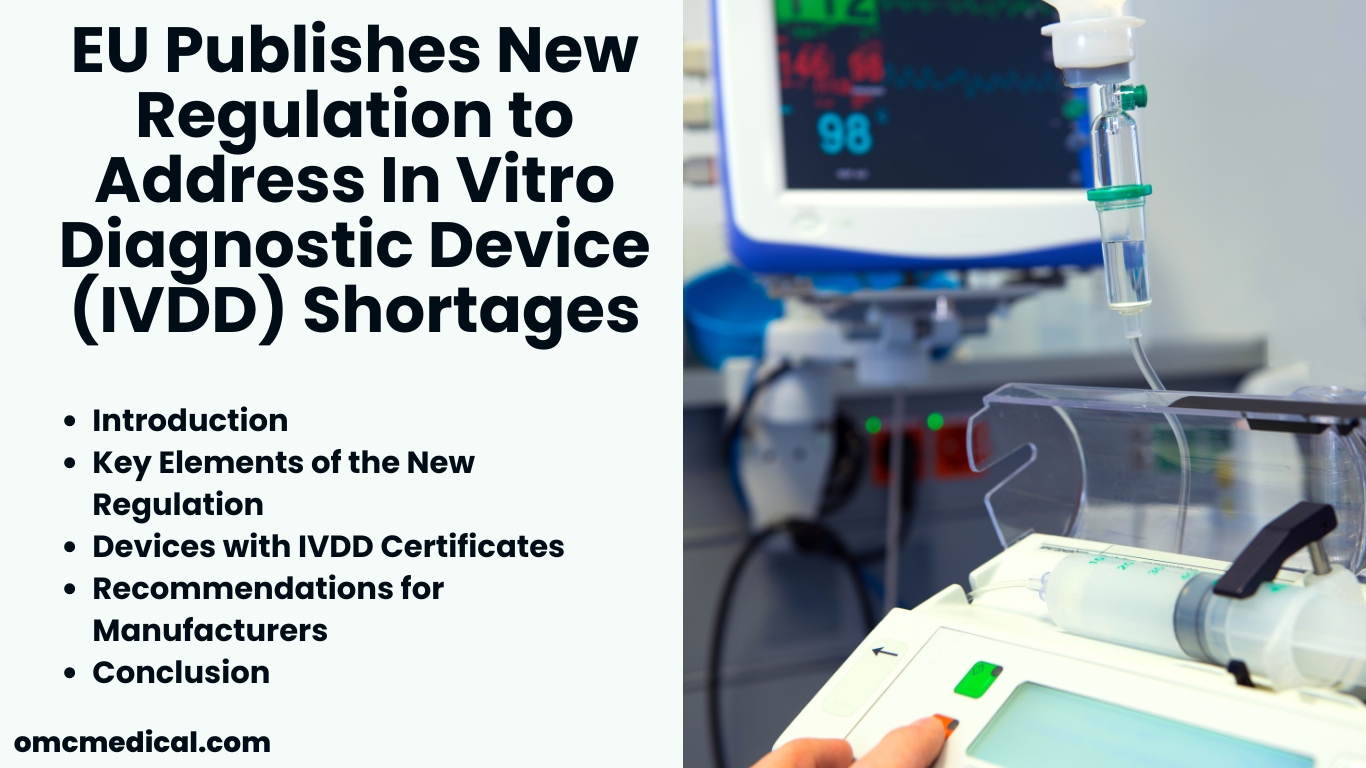A short article based on MDCG 2021-22 guidelines on “first certification for the type of devices and the corresponding procedures to be followed by the Notified Bodies, ” established based on Article 106 of Regulation 2017/745 for Class D IVDR devices.
Additionally, this guide talks about the conditions to be followed by the Notified bodies, whether to consult the expert panel for the performance evaluation report of the IVDR devices.
- If the type of the device comes under the first certification in the market (AND)
- There is no CS for the class D devices.
According to Article 48(6) of IVDR 2017/746, the first certification for the type of device means that the product has no similar product with the same intended use or technology around the European market.
Also, the notified bodies should submit the performance evaluation report to the expert panel within five days of receiving it from the manufacturer. The same intended purposes include
- Device functions like monitoring, diagnosing, screening etc.
- If the device is quantitative, semi-quantitative or qualitative
- It is automated or semi-automated, or not
- If it is used for any measurement
- If the device is used for any specific disorder
- What is the specimen type, or if it is applicable for some testing purpose
- What all the intended users
- Or if the device has the same principle of operation
Suppose the IVDR devices has met the above-mentioned purposes under Directive 98/79/EC or has an ongoing consultation with the expert panel under EU 2017/746. In such case, the notified bodies need not consult the expert panel for the certification.
However, if the class D device is with similar intended purpose but one of the IVDR devices has some additional intended purpose along with the common intended purpose, which falls outside Rule 1 or 2 of IVDR Annex VIII then, this type of device should be considered under the “type of device” while consulting the expert panel.
Other examples for the same type of purposes include
- Automated and semi-automated devices
- Technologies
- Multiplex and single analyte devices
- Kits and class D components of those kits
- Control materials
Hence, the notified body issuing the certificate should check if the product meets the criteria stated above to classify it as the “type of device” for the first time.
For the final decision, they can use their knowledge and expertise, consider the information provided by the manufacturer, or if the device has already undergone an expert panel consultation.
Post assessments, if the notified bodies decide that the product is given the first certification, they need to consult the expert panel and document the certification with the conclusion.
Fig 1: Notified body template for the expert consultation
If the expert panel has been kept in consultation for the first certification of the IVDR devices, the notified body cannot issue the second or third certificate without considering the views of the expert panel on the type of device.
What are class D IVDR devices?
Class D devices are high-risk devices, including devices used for blood screening for grouping, to screen cells & organs to manage infectious outbreaks or for transplantation.
What is an expert panel?
Expert panel advisors are appointed by the EU commission who can provide scientific, technical, and clinical evaluation guidance for high-risk devices and their performances.
Disclaimer: Regulations/legislations are subjected to changes from time to time and the author claims no responsibility for the accuracy of information.







